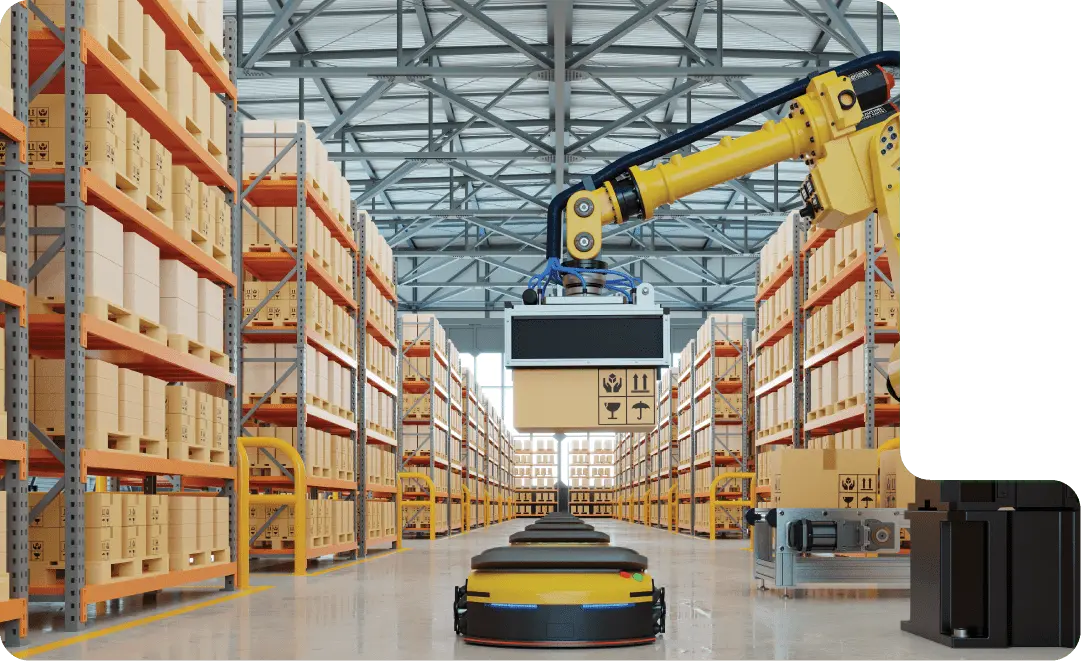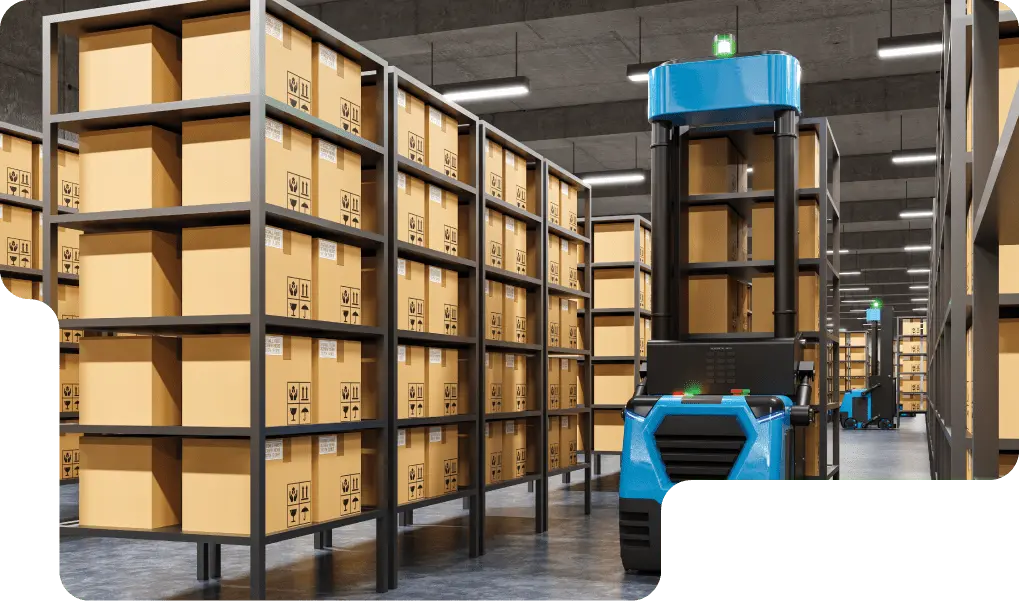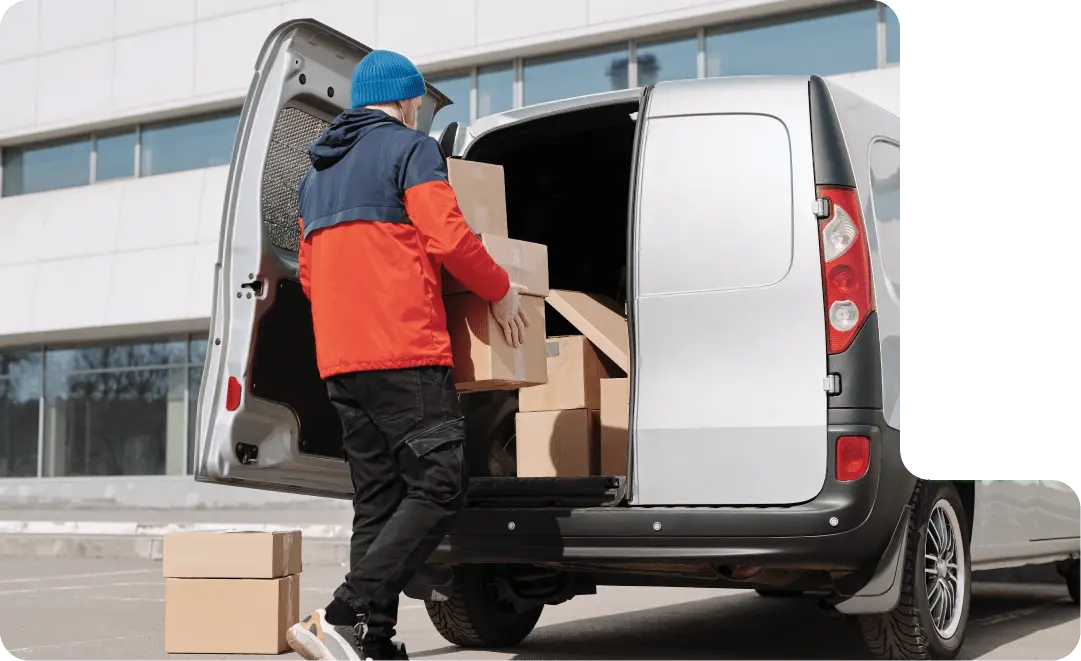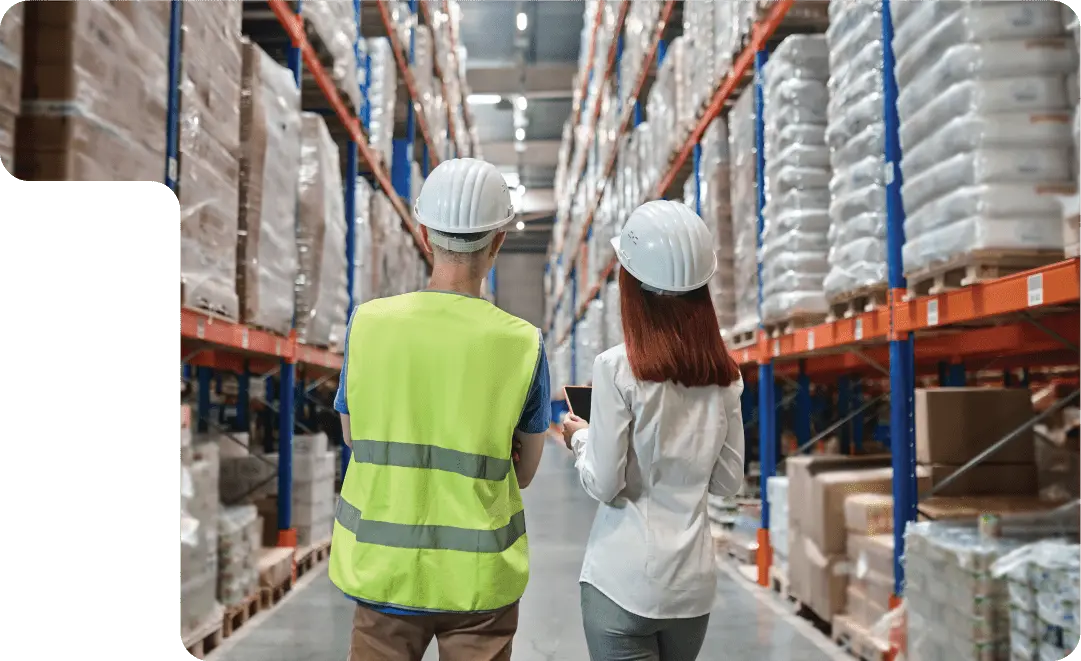3PL is an umbrella term encompassing e-commerce logistics operations and management.
A 3PL or third-party logistics provider offers outsourced logistics services, including warehousing, inventory management, FTL and LTL freight shipping, kitting and customization, picking, packing, and reverse logistics. Often used interchangeably with a fulfillment center or warehouse, a 3PL integrates with a company’s transportation and warehouse management systems to streamline delivery workflow.
When a company partners with a 3PL, it outsources its order fulfillment process and management operations to a third-party organization. Using a 3PL mitigates the risk of in-house fulfillment errors and lets companies focus on more significant priorities such as marketing and product development.
Today, the demand for customized fulfillment providers is high. The emergence of the e-commerce business model and the growth of the logistics industry over the years have been critical drivers of the range of services 3PLs have to offer. A business can choose a 3PL provider that best suits its unique requirements.
A 3PL (Third-Party Logistics) provider offers outsourced e-commerce fulfillment services. Read to know all about 3PL services.
In-house fulfillment and shipping are not enough to keep up with increasing order volumes as an e-commerce business expands into newer markets and grows its customer base.
There comes the point when a company must decide whether to outsource its fulfillment operations to meet customer expectations and demands.
If you’re looking to know more about 3PL services and how they benefit businesses, here’s a comprehensive guide to familiarize you with the 3PL experience.
When the conventional handling of fulfillment operations in-house becomes inefficient and unproductive, businesses turn to a 3PL or third-party logistics provider to outsource their fulfillment processes. Third-party logistics companies offer end-to-end services, including warehousing, picking, packing, shipping, and last-mile delivery to the end customer. A 3PL provider offers logistic expertise that is otherwise challenging for the core business to gain with traditional fulfillment strategies.
What is a 3PL?
3PL is an umbrella term encompassing e-commerce logistics operations and management.
A 3PL or third-party logistics provider offers outsourced logistics services, including warehousing, inventory management, FTL and LTL freight shipping, kitting and customization, picking, packing, and reverse logistics. Often used interchangeably with a fulfillment center or warehouse, a 3PL integrates with a company’s transportation and warehouse management systems to streamline delivery workflow.
When a company partners with a 3PL, it outsources its order fulfillment process and management operations to a third-party organization. Using a 3PL mitigates the risk of in-house fulfillment errors and lets companies focus on more significant priorities such as marketing and product development.
Today, the demand for customized fulfillment providers is high. The emergence of the e-commerce business model and the growth of the logistics industry over the years have been critical drivers of the range of services 3PLs have to offer. A business can choose a 3PL provider that best suits its unique requirements.
Types of 3PL Providers
The term 3PL includes different types of 3PL providers, and if a business is to find its right fit, it must understand the differences between providers.
3PL providers are broadly classified into four types, each catering to unique business needs.
1. Standard 3PL Providers
A standard 3PL provider offers the most basic logistics services, such as storage and shipping of products.
2. Service Developer 3PLs
Running an in-house fulfillment center means that the business has to bear all the operational costs of a warehouse. Partnering with a 3PL fulfillment company significantly lowers the expense burden, allowing the business to save time and money.
3. Customer Adapter 3PLs
3PL customer adapters manage almost the entire shipping process for the client and provide technology access for end-to-end visibility into processes.
4. Customer Developer 3PLs
3PL customer developers take complete responsibility for a company’s logistics operations and become their clients’ logistics department.

Core Functions of 3PL Providers
3PLs are designed to maximize speed and efficiency in the fulfillment process as expanding businesses deal with increasing order volumes. A 3PL company has strategies to lower delivery times and shipping costs that positively impact customer experience. Thus, partnering with a 3PL means that a business gains from the expertise and experience of 3PLs in handling e-commerce fulfillment.
If you’re wondering what 3PL providers do, here’s a list of some core logistics functions 3PLs perform to free up e-commerce companies to focus on other core aspects of the business:
3PL Warehousing
The term 3PL warehousing essentially means that a 3PL warehouse receives inventory or incoming goods from companies and stores them in a secure location. 3PLs usually arrange to transport merchandise to their warehouse, then manage and organize inventory on behalf of the business. As soon as a 3PL warehouse receives the stock, the warehouse staff places the goods in appropriate locations.
Depending on the product, each SKU or stock-keeping unit has a designated storage space, such as a container, a shelf, or a pallet. Storage capacities vary with 3PL companies, and most of them can handle current inventory with the scalability for expanding product range and order volume.
3PL Distribution
Besides warehousing, most 3PLs offer wholesale and distribution services such as picking and packing, custom labeling, and outbound order fulfillment. When an e-commerce company receives an order, its partner 3PL collects and picks the order items from the warehouse inventory.
Some third-party logistics providers use advanced technology that seamlessly integrates with e-commerce platforms for consolidating and tracking inventory, orders, shipments, and other information in a single place. In contrast, some 3PL providers require manual updating of orders and other relevant data, a rather time-consuming affair. Once all the order items have been picked, the 3PL selects the most appropriate packaging material for the safe and secure shipment of the products.
3PL Shipping
Once packed, the next step is to ship the orders. 3PLs partner with various shipping carriers to ensure proper labeling and delivery of orders to customers. While some 3PL providers have designated shipping partners, others compare shipping costs from different carriers to get the most feasible and competitive pricing based on the chosen delivery speed.
The shipping method and the 3PL’s shipping policies and partnerships determine every order’s carrier and delivery speed. Since 3PLs handle bulk orders, they typically get discounted shipping rates, one of the many perks of partnering with a 3PL. After shipping an order, the 3PL uses integrated technology to update the online business with real-time tracking information.
Returns Processing
Many 3PL providers offer reverse logistics or returns processing, an essential aspect of fulfillment operations. If a customer returns an order by shipping it back to the 3PL, the third-party logistics provider will process the return and restock or dispose of the item as required.
Most 3PL partners issue return shipping labels for customers for extra convenience. Returns processing by the 3PL saves time since e-commerce businesses need not handle returns in-house. In addition, 3PLs facilitate easy and instant tracking of the return order status by customers.
Cargo/Freight Consolidation
Cargo or freight consolidation is one of the many functions 3PLs perform. While shipping multiple small items to the same destination is typical in e-commerce, cargo or freight consolidation integrates the smaller goods into a single shipment. The process not only saves time but also reduces shipping costs significantly. 3PLs that offer cargo consolidation by shipping smaller packages into a single large one are known as consolidation service providers.

What are the services a 3PL provides?
Below we provide a breakdown of the main categories of logistics services 3PLs offer. However, this is only one way to classify 3PL services, and a single provider can fall into more than one category.
Transportation-based 3PLs
Transportation-based third-party logistics providers focus on transporting goods from one location to another. They may also offer additional logistics services.
Forwarder-based 3PLs
3PL freight forwarders are intermediaries that oversee and manage the transportation of goods from one place to another.
Warehouse/Distribution-based 3PLs
Some 3PLs provide warehousing and distribution services such as storage, inventory management, fulfillment, stock rotation, and reverse logistics.
Managed Transportation-based 3PLs
3PLs offering managed transportation solutions provide technology such as integrated freight management services and transportation management systems, manage carrier relations, support supply chain planning, and improve operational efficiencies, among other functions.
Information-based 3PLs
Information-based third-party logistics providers are internet-based companies primarily concerned with B2B operations. They leverage electronic markets for transportation and logistics services.
Financial-based 3PLs
Financial-based third-party logistics providers offer freight payment, auditing, and cost accounting and control services. They also provide tools for inventory management, tracing, tracking, booking, and monitoring.
The 3PL Order Fulfillment
If you are new to outsourcing fulfillment to a third-party logistics provider, it is pertinent that you understand what happens during a 3PL order fulfillment process.
Here’s a detailed explanation of the entire process, from the moment the customer places an order to last-mile delivery:
Receiving Inventory
A third-party logistics company can ship orders only when it has access to inventory. Thus, the 3PL accepts and stores the incoming stock in the receiving inventory stage. The inventory receiving and storage processes and capacities vary across 3PLs.
Inventory Warehousing
Once a 3PL receives the inventory, the next step involves storing the goods in a 3PL fulfillment center. 3PLs typically have an extensive network of fulfillment centers and store inventory across fulfillment centers to facilitate shorter delivery times to end customers. Each SKU gets a separate storage location, either a container, a shelf, or a pallet. Storage capacities vary across 3PLs.
Picking
The real action begins once a customer places an order on an e-commerce platform. While some 3PLs require e-commerce clients to update order details manually, others use sophisticated technology that integrates with the e-commerce marketplace or platform. As a result, the 3PL automatically gets notified of customers’ online orders for a more streamlined experience. Once the 3PL receives the order details, the warehouse picking staff collects the ordered items from their respective locations in the inventory.
Packing
Once the warehouse staff picks all the items in an order, the next step is to pack the orders for shipping. Typically, the packing materials the 3PL uses depend on its capabilities, the items shipped, and the client’s preferences, among other factors. Standard packing materials may include poly bags, bubble mailers, dunnage, unbranded boxes, etc. 3PLs bring their shipping expertise to the table by choosing the most feasible packaging material that not only protects the products but also keeps logistics costs low.
Shipping
The next step in the order fulfillment process is shipping the order. 3PL shipping involves the 3PL provider purchasing and printing shipping labels on its client’s behalf and contracting with carrier partners. While some 3PLs rely on their preferred shipping partners, others weigh up different carrier options to get the most competitive shipping rates depending on the customer’s delivery speed. Once an order ships, the 3PL will use integrated technology to update online stores with shipment tracking details automatically.
Returns Processing
Improved customer satisfaction is a priority in 3PL order fulfillment processes, and 3PLs ensure that by offering returns processing services. When a customer returns an order, it ships back to the 3PL provider. Whether the provider restocks the item or discards, it depends on its return policies and the e-commerce client’s preferences. By allowing 3PLs to issue return shipping labels for customers, e-commerce businesses can eliminate the hassle of processing returns in-house and let customers easily track the status of their returns.

How Does a 3PL Work?
Summarizing the role of a third-party logistics provider, we can say that the 3PL company handles the logistics of customer fulfillment. At the same time, you run the business and focus on its growth and expansion. In other words, a 3PL is essentially a link in the supply chain to which e-commerce businesses outsource their warehousing, distribution, and other fulfillment activities.
Having discussed the chronological steps in the order fulfillment service, let us now understand how a 3PL arrangement operates with the help of one of the simplest 3PL examples.
Suppose a book publisher hires writers, graphic designers, and editors to release publications. However, the publisher does not wish to handle the online ordering process and shipping in-house. So, the publisher partners with a 3PL provider to outsource fulfillment of its online orders, including shipping to the end customer.
The 3PL will begin its fulfillment process by receiving inventory (books) from the publisher, storing them in its fulfillment center, picking and packing items as per online orders, and finally, shipping orders. The 3PL company may also manage reverse logistics by processing orders that customers return. Therefore, the publisher can leverage the 3PL’s warehousing and distribution services as needed without worrying about inventory management, packaging, shipping, and last-mile delivery. Instead, the publisher can focus on its core business of publishing books while ensuring maximum customer satisfaction with top-notch 3PL fulfillment.

3PL vs. 4PL: What’s the Difference?
While discussing 3PL, it is worth getting familiar with another general term in e-commerce logistics: 4PL.
Now, how is 3PL different from 4PL?
4PL or fourth-party logistics adds another layer of separation between e-commerce merchants and their 3PL providers. When a 3PL outsources any of its own contracted services, it becomes a 4PL.
Taking the previous example of the book publisher, if its 3PL provider subcontracts shrink-wrapping and custom packaging to other companies, the 3PL becomes a 4PL provider. In other words, when a business partners with a 4PL, the 4PL provider arranges end-to-end 3PL services for its client. The end-to-end services can range from manufacturing to inventory procurement and other fulfillment components. 4PLs are also known as Lead Logistics Providers (LLPs) since they supervise every aspect of the supply chain such as overseeing warehouse operations, managing transportation management, or any other 3PL activity in the supply chain.
Most Valuable 3PL Services to Look For
Shipping orders is one of the most basic 3PL services. Depending on the provider you choose, third-party logistics companies offer a number of beneficial features and services. Here’s a list of some:
Inventory Management
With the rise of e-commerce and the growing trend of outsourcing or renting warehouse space for inventory storage, inventory management has become critical for omnichannel, online, and brick-and-mortar businesses. As such, inventory management includes ordering, storing, and restocking inventory, inventory forecasting, and adjusting order frequency and quantity. Depending on your 3PL’s technology and workflows, you can sync inventory with your online store to monitor real-time inventory levels across fulfillment centers. You can also reorder merchandise to prevent stock-outs and update real-time stock counts on your store’s website.
Distributed Inventory
Most 3PLs have warehouses scattered over different locations, allowing clients to split inventory across fulfillment centers. When a company’s customer base is geographically distributed across the nation, having inventory closer to shipping destinations facilitates two-day shipping. However, distributing inventory may be cost-effective only for providers that deal with large shipment volumes and want to reach more customers. Distributing merchandise across multiple locations also saves air shipping costs, ensures backup stock, and prepares for contingencies.
2-Day Shipping
Another valuable 3PL service to look out for is 2-day shipping. Initially adopted by online retail giants, free shipping and 2-day shipping have become industry norms. However, small e-commerce businesses struggle trying to figure out ways to meet the express delivery expectations of customers or lose businesses to the big players. Working with a 3PL can help businesses offer affordable two-day shipping services. Third-party logistics providers typically contract shipping carriers to negotiate discounted rates for clients. Moreover, the distributed inventory model ensures that orders are delivered before the expected date.
Kitting & Customization
Kitting refers to the warehouse and shipping technique of packing individual but related products and shipping them as a single unit. It increases warehouse efficiency, lowers labor costs, increases product sales, and enables faster shipping. Moreover, it lets online businesses customize inventory to create the perfect unboxing experience for customers. Besides kitting, 3PLs help in order customization, such as offering personal, branded gift notes, custom packaging, and custom sender labels.
Returns Management
Managing and processing return orders is a valuable service e-commerce businesses look for in a 3PL provider. 3PLs not only handle returned orders but also provide access to returns software solutions to simplify the return experience for customers. With a 3PL looking after your returns management process, you can gain end-to-end visibility into returns and choose to have the returned items disposed of, quarantined, or restocked.
DTC and B2B Fulfillment
When we talk of e-commerce, we mainly refer to B2C (business-to-consumer) fulfillment. However, an e-commerce business looking to optimize its multichannel logistics strategy can make things easier by partnering with a 3PL that handles B2B (business-to-business) and DTC (direct-to-consumer) fulfillment as well. So, whether you are fulfilling online subscription orders, operating a brick-and-mortar store, or selling retail on an online marketplace, a 3PL can serve as your back-end logistics hub, centralizing multichannel inventory management and fulfillment.
International Fulfillment
Looking to create a global brand presence? Partnering with a third-party logistics provider offering cross-border solutions and having a physical presence in several countries is the best solution. Shipping freight by air is costly, but a 3PL provider with warehouses located in international locations can help your business scale in global markets. A 3PL can be your one-stop international fulfillment solution integrating warehouses, inventory, and orders across the globe.
Advanced Data Analytics
Data is a valuable asset in any industry today, and supply chain logistics is no exception. It is equally critical to analyze the data and derive insights to offer a competitive advantage to businesses. Many 3PLs provide robust data analytics tools to enable better reporting and decision-making. Data analytics features could include visibility into historical stock levels at any time point, the number of days it takes to deliver orders, the average storage cost per unit, and more.
What are the Benefits of Working With a 3PL?
Outsourcing fulfillment to a 3PL has many benefits. Although capabilities differ across 3PL companies, almost all 3PLs offer standard warehousing, inventory management, packaging, and shipping services to maximize profitability, expedite delivery, and provide reliable logistics to partner businesses.
Cost and Time Savings
By partnering with a 3PL, a business can do away with the need to rent or buy a warehouse, hire labor, and invest in technology and logistics operations for in-house fulfillment. Moreover, in-house fulfillment becomes expensive and often unmanageable as a business grows and order volume increases. By outsourcing fulfillment activities to a 3PL, companies can save valuable time and resources spent on building fulfillment infrastructure.
Scalability
One of the most significant benefits of partnering with a 3PL is that a third-party logistics provider can scale operations as per your business needs. Whether you are a small business looking forward to expansion or an established company handling bulk online orders, 3PLs have you covered. A 3PL can provide warehouse space, labor, transportation, and other resources depending on a business’s exact services while making room to scale for future growth. It allows e-commerce businesses to effectively expand into new markets with no hassle.
Industry Expertise
It is most unlikely that e-commerce businesses have all the expertise needed to handle shipping and logistics efficiently. A 3PL provider comes to the rescue with up-to-date knowledge and expertise of the latest industry standards and trends. Third-party logistics companies provide expert e-commerce logistics professionals and technical resources to optimize the supply chain and improve its efficiency. Moreover, 3PLs have partner networks comprising custom packaging providers, shippers, and marketing agencies to drive logistics success further.
Expansion
3PLs make it easier for businesses to expand into new and emerging markets, including international markets. Unlike in-house fulfillment, 3PL providers have a distributed network of fulfillment centers to help reduce shipping costs and transit time for orders. By partnering with a 3PL, a business can access new markets, leverage new supply chains, and improve customer service that wouldn’t have been possible with the limited resources in-house fulfillment offers. Plus, 3PLs provide the necessary security and compliance measures to ensure their services are globally accredited, making expansion more accessible and hassle-free.

Why do Companies Choose to Work with a 3PL Provider?
3PLs streamline logistics and fulfillment operations, allowing e-commerce companies to ensure that workflows run smoothly and customers are served better. They provide the market knowledge and industry insight to mitigate supply chain inefficiencies.
Below we describe some of the primary reasons why companies choose to partner with a 3PL provider:
Market Knowledge
The cost of handling fulfillment in-house includes warehouse real estate and shipping expenses, among others. With the increase in customer expectations, fulfillment costs continue to grow. By working with a 3PL, a company need not worry about warehouse locations and fast shipping since most 3PLs have an expansive network of fulfillment centers. 3PLs also leverage their existing contracts with carriers to get discounted shipping rates and reduce overhead costs.
Industry Insight
3PLs ensure improvements in the logistics and supply chain operations by pairing industry knowledge and expertise with optimization and efficiency. They bring years of experience to the table, enabling e-commerce companies can reap benefits such as time savings, reduced costs, and improved customer experience.
Reduced Supply Chain Slackness
3PLs use sophisticated technology such as warehouse management systems to create end-to-end visibility of the supply chain, resulting in increased accuracy, speed, and efficiency. The advanced capabilities of the software systems can do it all, from improved shipping and inventory tracking to automating information transfer. The optimal use of 3PL software introduces automation into the fulfillment process to achieve more proficiency and efficiency in customer service.
How Does a 3PCL Pricing Work?
The third-party logistics provider’s pricing model and a business’s specific needs determine the 3PL pricing.
Here’s a list of some of the standard 3PL costs to give a basic idea of how the 3PL pricing works:
| Cost | Details |
| Inventory receiving costs | The cost of receiving and storing incoming inventory |
| Inventory storage costs | 3PLs charge clients for storage space in their fulfillment centers |
| Picking and packing costs | The cost involved in picking and packing orders |
| Kitting costs | Kitting and assembly costs depend on how order items are arranged and vary across clients |
| Packaging costs | Some 3PLs charge separately for packing materials while others include it in picking and packing costs |
| Shipping costs | The amount 3PLs charge to ship orders from fulfillment centers to the customer’s doorstep |
| Onboarding costs | The cost involved in getting a 3PL fulfillment service and its infrastructure up and running |
Who Should Consider Outsourcing their Fulfillment Logistics to a 3PL?
Regardless of the industry, e-commerce platform, or product category, almost any e-commerce business can leverage the benefits of outsourcing fulfillment to a 3PL.
Here are some telltale signs that you should consider outsourcing fulfillment to a third-party logistics provider:
Lack of Inventory Storage Space
If you are running out of inventory storage space, it is time that you outsource fulfillment to a 3PL warehouse. Businesses that manage fulfillment in-house especially face storage space constraints. By outsourcing inventory warehousing and order fulfillment to a third-party logistics provider, businesses can stay organized, handle inventory more efficiently, and expand product lines without worrying about storage space limitations.
Increasing Shipping Volume
When your order volume has increased to a point where your in-house fulfillment infrastructure is overwhelmed, it is time that you consider a 3PL provider. As your business continues to grow, you will spend more time fulfilling orders to meet demands and less time focusing on other core areas of your business. A 3PL can take care of your inventory, packing, and shipping while you focus on developing new products, launching market campaigns, and acquiring new customers.
Market Expansion
Say you are an e-commerce company with distribution centers located in a few select locations in the country. So, while you can offer quick lead times to your urban customers, those in the suburbs or more remote locations get their shipments delivered at least a week after you process them. The only way to keep all your customers satisfied without committing to long-term infrastructure investments is by partnering with a 3PL. Likewise, if a company wants to establish a presence in international markets, 3PLs are their best bet.

3PL Myths and Misconceptions
Despite the advantages of third-party logistics, many organizations refrain from hiring third-party logistics services because popular myths and misconceptions about 3PLs abound.
Let’s demystify some common ones here.
Outsourcing Fulfillment to a 3PL is an Expensive Investment
While there are some standard costs involved in hiring 3PL services, it is an investment that delivers tangible returns in the long run. Once you consider all the factors and the benefits 3PLs offer, it is easy to see that partnering with a 3PL is more cost-effective than other fulfillment options.
Order Fulfillment is Simple
Many new and small businesses have a notion that order fulfillment is no big deal and selling a good product is all they need to guarantee success. However, the ground reality is quite the opposite. Optimizing order fulfillment is a continuous process and with the business growing, in-house fulfillment becomes tedious, unproductive, and inefficient.
Hiring a Third-Party Logistics Means Giving Up Control
The 3PL maintains the client’s inventory and takes care of end-to-end processes involved in order fulfillment while the client gains visibility into all processes. It does not imply that the client gives up control of the business to the 3PL. Instead, 3PLs manage the time-consuming aspects of logistics so the client can focus on the core business.
Outsourcing Works Only for High-Volume Businesses
Outsourcing is beneficial regardless of whether your business is small or big. Small businesses particularly face seasonal spikes in demand and order volume that can become unmanageable in terms of timely deliveries. Partnering with a 3PL ensures that a business is ready to scale without losing market credibility or increasing fixed costs.
Debunking some of the myths about 3PL partnerships can go a long way in helping companies achieve their goals of exceptional service, improved customer satisfaction, time and cost savings, and better profit margins.

The Growth of 3PLs
Although third-party logistics providers have been around for a long time, the catchy “3PL” abbreviation and the phrase “third-party logistics” became popular in the 1970s and 80s.
The APAC third-party logistics market was valued at 298.7 billion USD in 2017 and is forecasted to account for 467.5 billion USD by 2027, growing at a CAGR of 5.9% during 2018-2017.
Some of the top growth drivers of the 3PL logistics market are evolving customer expectations and demands, globalization, cloud adoption, and the growth of e-commerce business models. But the remarkable growth of the 3PL industry does not take away the fact that global logistics is becoming more complicated by the day. The complexity is primarily due to increasing customer demand, warehouse management systems, managed services, and strategic analysis of the supply chain, among other factors. However, the demand for 3PL services is expected to escalate in the near future as more and more retailers and manufacturers prefer to focus on core competencies and subcontract activities where they have less expertise, including logistics.

3PL vs. Freight Forwarding
Both freight forwarders and 3PL logistics providers help customers move products from one location to another. However, there is a fundamental difference between the two.
Freight forwarding is essentially a service that coordinates the movement of goods from one point to another using single or multiple carriers. Freight forwarders are not the actual freight movers and act as an intermediary between shippers and other transportation services. They offer a range of services, including land freight, ocean freight, air freight, and import and export compliance. In some cases, a freight forwarder may also provide limited and short-term storage facilities typically as a preparation or stopover needed to move your products.
In contrast, a 3PL company provides logistics outsourcing support and covers the entire spectrum of logistics activities, from warehousing to order fulfillment.
The difference between a 3PL and a freight forwarder boils down to the needs they fulfill. While a freight forwarder focuses on moving goods between two locations, a 3PL manages all your logistics needs. A 3PL helps prepare the inventory before an order is placed, gets the best shipping rates, fulfills orders, and takes care of last-mile delivery. Overall, a 3PL becomes more intricately associated with its client and offers more services than a freight forwarder.

Choosing the Best 3PL Company: What to Look For in a 3PL?
With numerous 3PL providers offering their services in the market, it is pretty challenging to determine which 3PL company is best for you.
3PL services vary with providers, business needs are unique, and there is no one-size-fits-all approach to choosing a 3PL provider. However, there are some fundamental features and criteria a business can look out for when contemplating a 3PL partner. Let’s take a closer look at some of these:
Flexibility and Scalability
If need be, the 3PL provider must be capable of making instant changes to the number of products a business ships. Besides managing current order volumes, the provider should be ready to scale its fulfillment infrastructure to keep up with business growth and expansion.
Transparency and Visibility
A 3PL provider should provide complete visibility into what occurs at each step of the logistics chain and be transparent about pricing models, company policies, and other critical aspects of the partnership.
Workload Handling Capacity
Demand fluctuations in business are common; there will be times when a business sees a sharp spike in orders and then there are phases when demand is low. Regardless of the demand and order and demand volume, a 3PL should always be equipped to handle stocks, packaging, storage, and delivery.
Technological Capabilities
Choose a third-party logistics provider with the technological competence to track and deliver shipments. It will also help you monitor key metrics of your fulfillment process more efficiently.
Industry Reputation
Lastly, the 3PL provider must have a good overall reputation in the industry. So, before choosing a 3PL partner, make sure to probe into their authenticity. You can do so by checking genuine client feedback or by reaching out to the current clients of the 3PL company to get first-hand reviews.
Above all, you must be able to build a trusting relationship with your 3PL provider since they will occupy a critical place in your business and will be trusted with your inventory.
How to Get The Best Out of a 3PL Provider
Since every business has its unique supply chain strategy, the 3PL expertise they require will also differ.
Working with 3PLs, many customers face the question of how to get the most out of their logistics provider. While it is not always practical to create standards as to whether you are getting the best out of a 3PL provider, here are some suggestions that can help you establish a fruitful relationship with your provider:
- Clearly identify and outline how you want your 3PL partner to fulfill your business needs.
- Before choosing a 3PL, ensure they have the expertise to outsource the services you need.
- Instead of working with several 3PL companies, choose a one-stop solution provider that fulfills your needs end-to-end.
- Be clear with your expectations from the 3PL provider and demand results.
- Integrate IT systems for improved supply chain efficiency and transparency
- Carry out consistent and continuous evaluation of your 3PL provider’s performance and keep communication channels open.
Conclusion
3PLs form a crucial part of most e-commerce business supply chains offering services ranging from warehousing and freight forwarding to inventory management, distribution, and shipping. However, if you are considering outsourcing fulfillment to a 3PL, one of the first things you must realize is that not all businesses require the same set of 3PL services. But what remains constant is that your 3PL provider is trustworthy, maintains high customer satisfaction, and helps you grow your business. Know what to look for in a 3PL provider and choose the best solution for your business
FAQs:
3PL is an acronym for third-party logistics. It is an umbrella term encompassing e-commerce logistics operations and management.
3PL fulfillment is the process of outsourcing e-commerce order fulfillment to a third-party logistics provider that manages the warehousing, inventory, picking, packing, and shipping of orders on behalf of a business.
Companies use 3PL services because of the benefits 3PLs bring, such as industry expertise, market knowledge, lower overhead costs, reduced supply chain inefficiencies, and improved customer satisfaction.
Outsourcing fulfillment to 3PLs is common among companies dealing with raw materials, bulk goods, electronics, apparel, cosmetics, wine and spirits, and general merchandise, to name a few.
The cutting-edge technology 3PLs use, and their scalability and flexibility make them attractive for customer companies looking to outsource fulfillment.
The different types of 3PL categorizations include transportation-based 3PLs, forwarder-based 3PLs, warehouse/distribution-based 3PLs, managed transportation-based 3PLs, information-based 3PLs, and financial-based 3PLs.
3PL warehousing means that a 3PL warehouse receives inventory or incoming goods from businesses and stores them in a secure location. 3PLs typically arrange for inventory transportation to their warehouse, then manage and organize inventory on behalf of the business.
- Receiving inventory
- Warehousing/storage
- Picking orders
- Packing orders
- Shipping
- Returns processing
When a 3PL outsources any of its own contracted services, it becomes a 4PL. In other words, a 3PL manages outsourced distribution and logistics for a specific customer, and a 4PL manages customer 3PLs and acts as a single point of contact in the entire supply chain.
A 3PL inventory or inventory system is essentially a warehouse management system (WMS) that tracks and manages warehouse activities such as physical inventory management, warehouse picking, packing and returns processing, labeling, shipping, and order tracking.





